
Understandably, all eyes at Porsche's Frankfurt auto show stand will be turned towards the spanking new 911 Carrera and Carrera S Coupes, but Porsche will also celebrate the first public outing of their diesel-powered Panamera, details of which were announced earlier this year.
The most fuel-efficient variant of the Panamera sports sedan to date is fitted with an Audi-sourced 3.0-liter turbocharged V6 common-rail diesel pumping out 250-horsepowerand a brawny maximum torque of 550Nm (406 lb-ft). Power is channeled to the rear wheels through an eight-speed auto.
While the Panamera Diesel can dash from zero to 100 km/h (62mph) in a zippy 6.8 seconds and reach a top speed of 242km/h (150 mph), what sets it apart from the other members of Porsche's family is its low fuel consumption.
When fitted with standard tires, the diesel model returns a combined fuel economy of 6.5 lt/100 km (36.2mpg US or 43.5mpg UK) with CO2 emissions of 172 g/km CO2, while these numbers drop to 6.3 lt/100 km (equal to 37.3mpg US or 44.8mpg UK) and 167 g/km CO2 respectively, when opted with low rolling resistance tires.
Click for Full Size




Click title for the source
Wednesday, August 31, 2011
Diesel-Powered Porsche Panamera to debut in Frankfurt
Posted by Hans von Dietrich und.......... 0 comments2013 Audi S8 gets 4.0-liter Twin-Turbo V8 with 520-Horses
Posted by Hans von Dietrich und.......... 0 comments
Audi's third and final "S" model heading to the Frankfurt Motor Show is the luxurious S8 that will be launched on the market along with the S6 and S7 Sportback in the spring of 2012.
As it holds the title of being the 'Big Daddy' of Audi's S range, it was only appropriate that the S8 receive a more powerful version of the newly revealed 4.0-liter twin-turbocharged V8 engine than on the S6 and S7 models.
The German firm's engineers further honed the 4.0 TFSI pushing output to 520-horses and a constant 650 Nm (479.42 lb-ft) of torque to the crankshaft between 1,700 and 5,500 rpm.
Power is channeled to all four wheels through an 8-speed automatic transmission and Audi's permanent all-wheel drive system, with Audi making claims of a 0-100km/h (62mph) sprint time of just 4.2 seconds, or 0.6 and 0.7 seconds faster than the 420HP S6 sedan and S7 Sportback, respectively.
The V8 engine features a cylinder deactivation system that can cut down one bank to become a 4-cylinder , as well direct-injection technology, plus energy recuperation and start-stop systems.
As a result and despite a 70HP increase in output over the previous 5.2-liter V10-powered S8, Audi says average fuel consumption has decreased by nearly 23 percent at 13.2 liters per 100 km (17.8mpg US).
To improve handling, the S8 gets a specially tuned adaptive air suspension with variable damping, which can vary the ride height of the body between three levels, and four internally ventilated disc brakes that measure 400mm (15.75 in) in diameter up front and 365mm (14.37 in) at the rear, with carbon ceramic disks offered as an option.
As with other members of Audi's S family, the styling touches on the S8 are subtle. On the outside, apart from the 20-inch alloy wheels shod with 265/40-series tires, the 5.15 meter-long (16.90 ft) S8 gets a different grille treatment, a front apron with a lip spoiler, and a revised rear bumper that incorporates a diffuser and four tail pipes.
Interior modifications include the usual, meaning sport seats, a sport steering wheel and –you guessed it- sportier looking trim.

Click for Full Size


Click title for the source
Audi reveals new S7 Sportback with 420HP Bi-Turbo V8
Posted by Hans von Dietrich und.......... 0 comments
When the doors open to the 64th IAA International Motor Show on the September 13, Audi will hold the world premiere of the all-new S7 Sportback.
The most potent member of the A7 Sportback family to date debuts a new 4.0-liter twin-turbocharged TFSI V8 engine that will also find its way under the hood of a variety of VW Group models including Audi's own S6 and even Bentley's Continental series.
The force-fed eight-cylinder motor generates an output of 420-horsepower and a peak torque of 550 Nm (405.7 lb-ft), allowing the S7 to complete the 0-100km/h (62mph) sprint in 4.9 seconds and reach an electronically limited top speed of 250km/h (155mph).
The V8, which uses the German firm's “cylinder on demand” technology under part load, consumes on average an estimated 9.7 liters of fuel per 100 km (equal to 24.3mpg US).
A seven-speed S tronic dual clutch transmission and Audi's quattro permanent all-wheel drive system with a self-locking center differential and torque vectoring, transfer power to the ground.
There's also an optional sport differential that distributes the power in variable proportions between the rear wheels.
The S7 Sportback features an adaptive air suspension sport and the Audi drive select dynamics system, while braking is provided by large, internally ventilated disc brakes front and rear. Those willing to dig deep into their pockets can opt for the carbon fiber-ceramic discs.
The exterior changes are fairly subtle and include bespoke front grille and bumper designs, side sills, a different rear bumper that houses a diffuser and quad tail pipes plus 19-inch or optionally, 20-inch wheels.
As for the cabin, the S7 is fitted with sport seats dressed in combination of Pearl Nappa leather and Alcantara (a full leather treatment is optional), a three spoke steering wheel and unique decorative trim.
Audi said first deliveries of the S7 Sportback are scheduled to begin in spring of 2012.

Click for Full Size


Click title for the source

The latest-generation S models will debut in two weeks at the 2011 Frankfurt Auto Show and will go on sale in Europe next spring.
The big news is under the hood, where a new twin-turbo 4.0-liter V8, with stop-start and cylinder-deactivation technologies, replaces the previous naturally aspirated 5.2-liter V10.
In the S6 and S7, the 4.0 TSFI is rated at 414 horsepower and 406 pound-feet of torque, compared with 435 hp and 398 lb-ft in the previous S6. With power delivered to all four wheels through a seven-speed S tronic gearbox, 0-60 acceleration is trimmed to less than 4.8 seconds in the S6 sedan and to less than 4.9 seconds in the S6 Avant and the S7. Top speed, as usual, is electronically governed to 155 mph.
In the flagship S8, the 4.0 TSFI is boosted to 512 hp and 479 lb-ft, compared with 450 hp and 398 lb-ft in the previous S8. With power flowing through an eight-speed Tiptronic, 0-60 acceleration is slashed to less than 4.2 seconds, from 4.9 seconds for the older 5.2 V10 version.
Performance isn't the whole story either. Average fuel economy climbs to 24 mpg in the new S6 and S7 and to 23 mpg in the S8.
The S models share some common elements, notably sport-tuned adaptive air suspension with variable damping, larger wheels and tires (19- and 20-inch rims on the S6/S7, 20s and 21s on the S8), subtle visual enhancements and an array of cutting-edge driver-assistance systems.
Among the options are a rear sport differential (standard on the S8), carbon fiber-ceramic brake discs and high-end Bang & Olufsen audio systems.
The cockpits also receive special treatment, with generous applications of leather and brushed aluminum, as well as a choice of real wood inlays.
Audi says all of the options on the standard A6, A7 and A8 also are available on the S versions.

Click for Full Size


Click title for the source
Tuesday, August 30, 2011
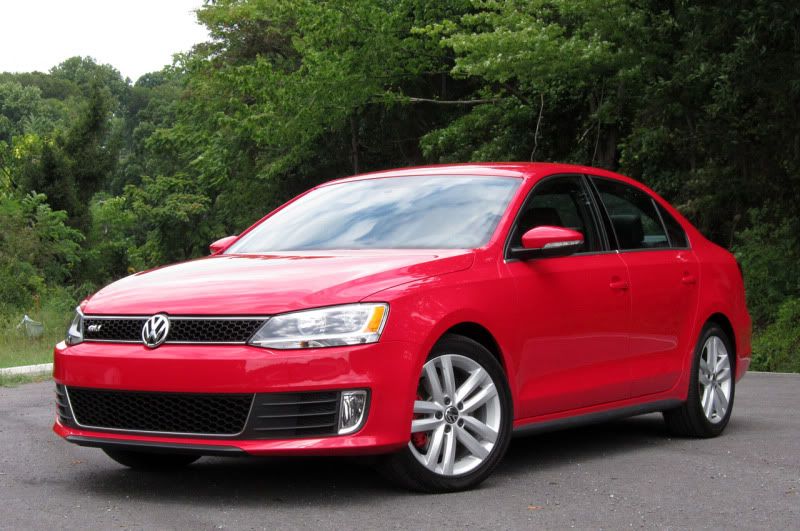
What we've really been waiting for is this, the 2012 Jetta GLI. Packing VW's ubiquitous turbocharged 2.0-liter four-cylinder, a six-speed manual or optional DSG and an independent rear suspension, the GLI is here to assuage enthusiasts' fears that VW has lost the plot in its relentless pursuit of global market dominance. Just as Porsche hasn't given up on sports cars as it expands into un-Porsche-like segments, neither has VW in its efforts to appeal to more people. But unlike Ferdinand's second child, we still have the nagging sense that Volkswagen is leaving something on the table – despite the GLI's potential on paper.
From a far, it's hard to tell the GLI apart from a standard Jetta. Get closer and even the deeper front spoiler, honeycomb grille and vertical fog lamps pulled from the GTI do little to convey the same racy presence of its hot hatch stablemate. The standard 10-spoke, 17-inch wheels even look a little small in their wheel wells, despite the red brake calipers. Thankfully, an optional set of 18-inch, split five-spoke rollers up the aesthetic game and come coated in 225/40 R18 Dunlop SP Sport 01 AS rubber that makes for a worthy upgrade over the standard 225/45 R17 all-season Continental ContiProContacts.
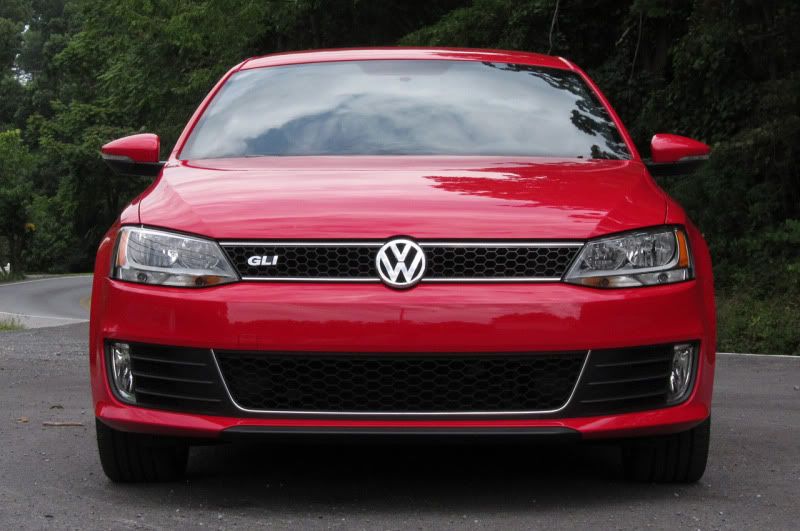
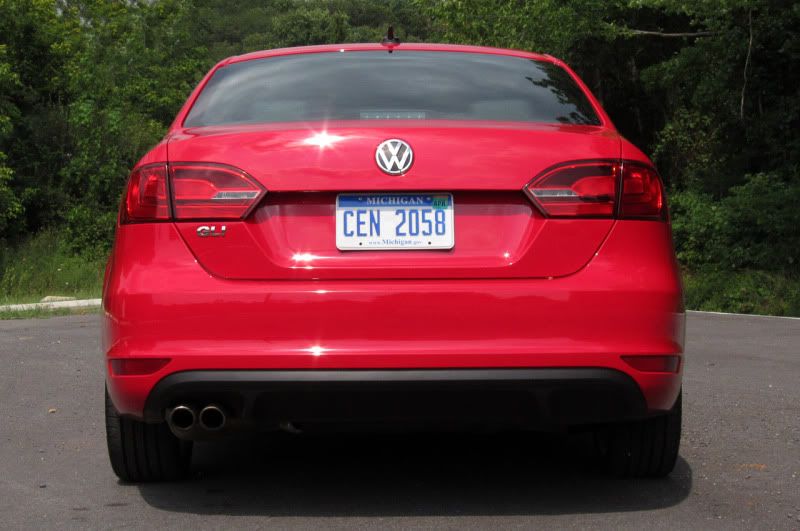
The Jetta's tune changes on the inside. And to excellent effect.
Behold, a soft-touch dash; convincing aluminum trim on the dash and flat-bottom, leather-wrapped wheel; bolstered seats coated in optional V-Tex leatherette; and contrast red stitching abound, although the GLI's plastics go from high-class to low-brow as soon as your hand ventures south.
But this isn't a story about a reworked interior on a Jetta. This is about how the GLI holds up as a GTI sans-hatch. And to that end, it's exactly what you'd expect.

Power from the 2.0T is unchanged for sedan duty, with 200 horsepower coming on at 5,100 rpm and peak torque – 207 pound-feet – flowing from 1,700 rpm and up. We spent about 20 minutes in the DSG model and found it... fine. But as per usual, the manual is the driver's choice – even in start-and-stop traffic.
Clutch take-up is on the high and light side, so puttering around town doesn't require a Tour de France-honed left leg. The shifter standard VW fare, with an enlarged knob and slightly long throws providing a choice of six forward ratios. Braking is handled by 12.3-inch vented front discs and 10.7-inch solid rear rotors, all of which add up to a predictable, linear pedal feel that only began to fade after two particularly torturous runs.
While the 2.0T continues to gain accolades for its linearity and tunability, VW's tried-and-true turbocharged four-pot is starting to show its age, despite a recent reworking. Two hundred horsepower was plenty for a front-driver in 2005, but consider that the Kia Optima Turbo, BMW's new turbocharged four and – hell – even the old Cobalt SS all make more ponies with the same displacement, and the GLI can't help but feel somewhat ill-equipped for the modern age, even if it gets the job done nicely. We still managed some wheelspin in second gear when planting our right foot and you can hit 80 mph in third gear if you're so inclined, but there's not much happening on the far side of the tach, despite peak horsepower arriving further along in the rev range.
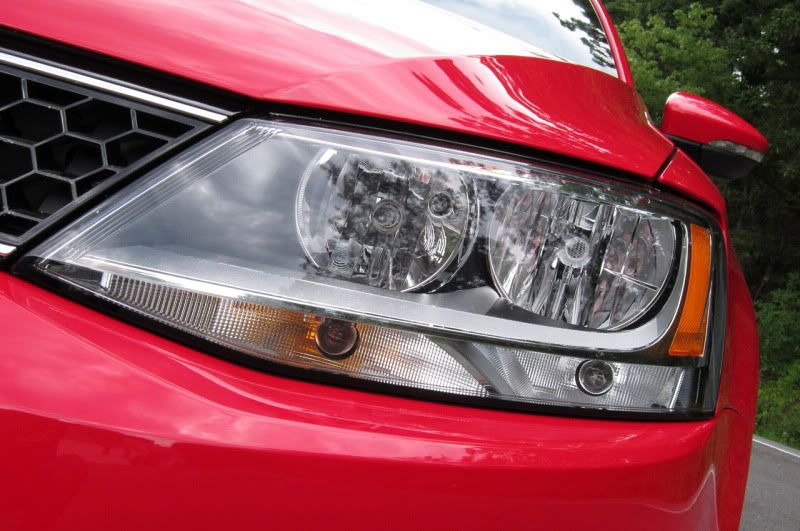
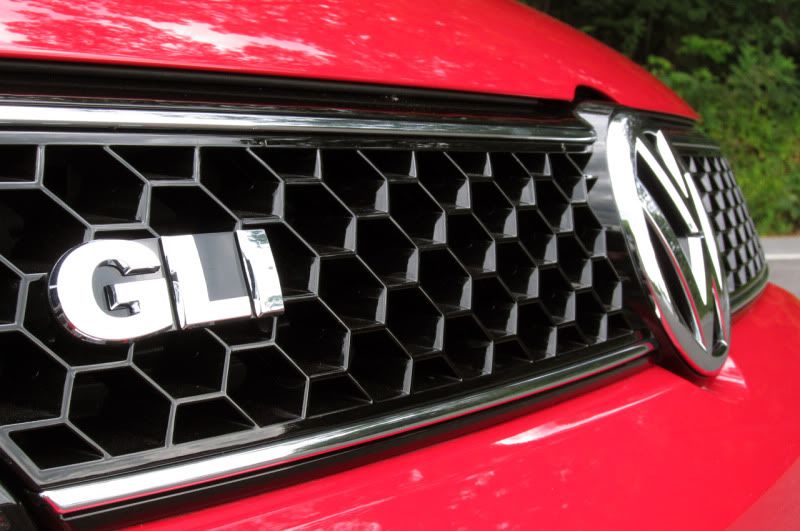
The other added benefit of swapping the GTI's drivetrain directly into the Jetta is the inclusion of the XDS cross differential that's engineered to reduce torque – and thus, wheelspin – to the inside wheel through a corner. As with the GTI, the ABS-based system works, but constant flogging means brake fade comes on stronger than in something with a mechanical torque-vectoring diff. We also experienced momentary traction control engagement with the left front loaded and the right coming over a crest. That's more a product of an uneven (and likely untested) surface than an engineering fault, but considering there's no off switch for the traction control, it's worth noting.
The other core driver bits, specifically the electrically assisted steering, 15mm lower ride height and bolstered seats, are more tuned to around-town runs and freeway cruising than all-out tarmac assaults. Feel from the wheel is above-average, if not overly communicative, and the seats do their best to hold you in place, unless your personal curb weight is on the malnourished side. On the topic of tonnage, the GLI with the six-speed manual comes in at 3,124 pounds, with the DSG-equipped model slipping in just over 3,150 pounds. Compared to the GTI organ donor (three-door manual at 3,034 pounds and up to 3,160 pounds for the five-door automatic), the weight increase is negligible.
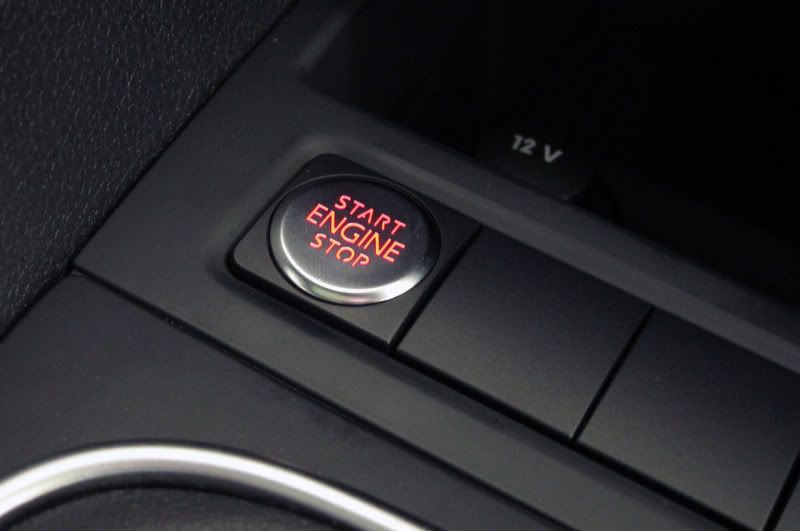


Driving the GTI and GLI back-to-back, the suspension work performed on the Jetta combined with the extra 2.9 inches of wheelbase (101.5 vs. 104.4, respectively), made the GLI the more comfortable cruiser – but at the expense of engagement. The extra weight over the rear provided by the GTI's hatch and the shorter space between the wheels made it noticeably more chuckable, with the rear rotating ever-so-slightly and allowing the front to tuck in quicker when adjusting the throttle mid-corner. The seating position – admirable in the GLI – was exceptional in the GTI, and considering the added utility of the hatch and the nominal penalty rear seat passengers pay in the legroom department (35.5 inches for the GTI and 38.1 inches for the Jetta), only regular people-schleppers and hatch-haters would be better served with the sedan.
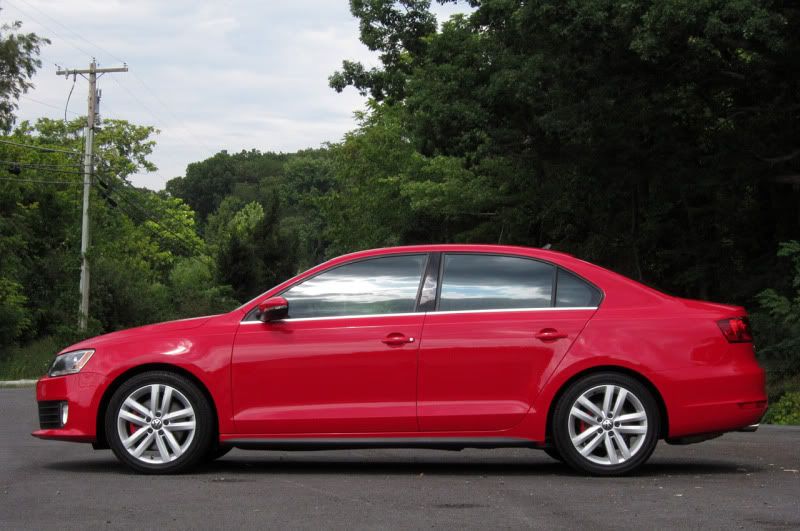
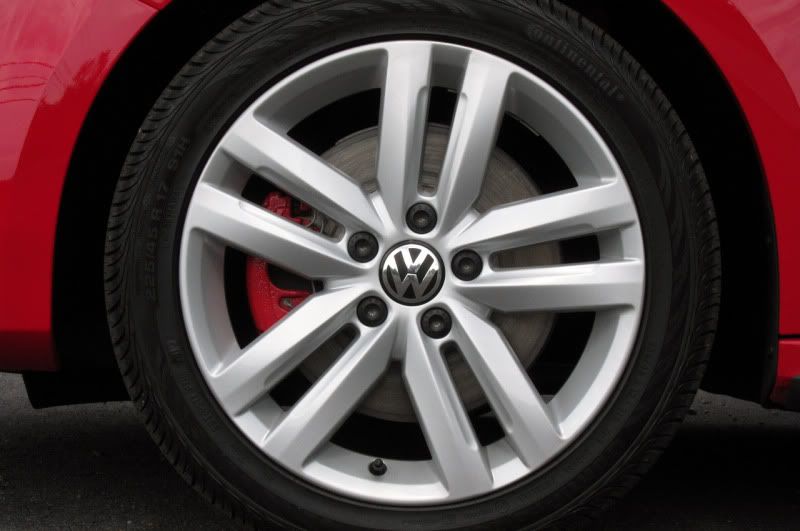
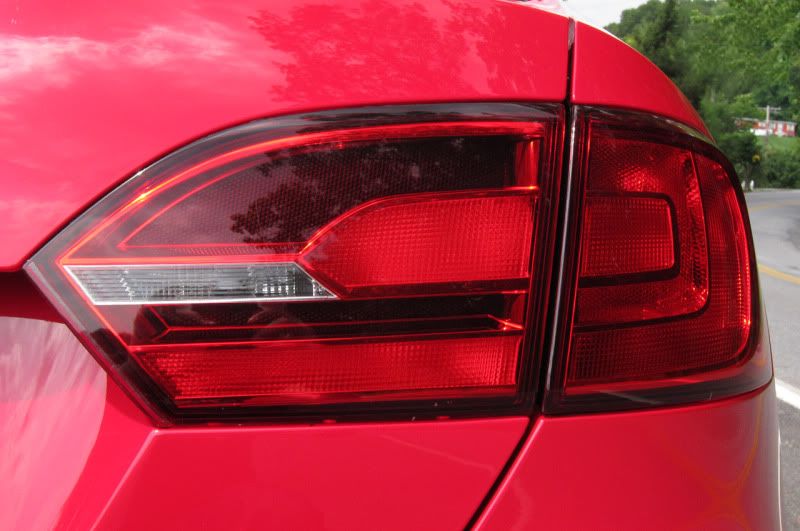
What we're left with is an overall impression that Volkswagen has made the 2012 Jetta GLI for people who just want more. More power, more flash, more amenities and an interior that doesn't make you wretch. In that, they've succeeded. But what VW hasn't made is a real sports sedan. For those people, the Golf R – despite its hatchback – is the what they're after.
Yet for the masses, the Jetta GLI fits the bill. Like the standard Jetta before it, the GLI seems to leave some of what we appreciate on the table, but in exchange nets a total package that's more endearing to the average buyer. While the GLI is closer to what we want than the standard Jetta, it's still at least 20 horses and a stiffer suspension short of ideal. And what bothers us more than anything is that we know VW can deliver it.
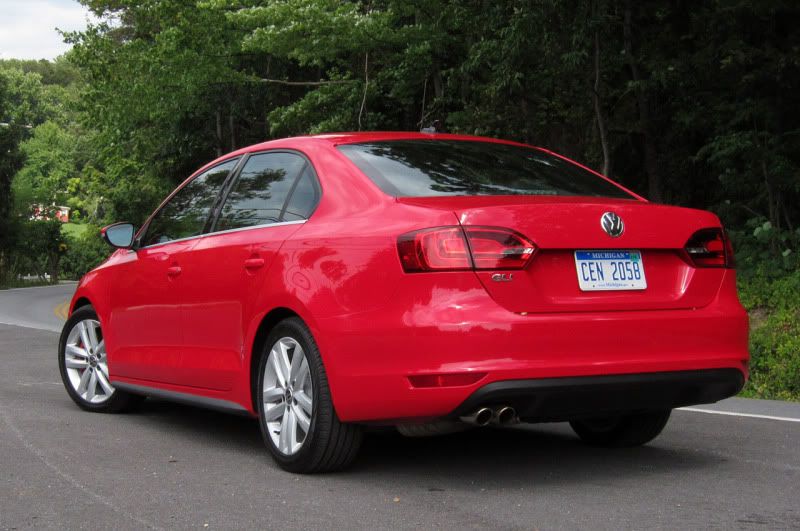
Click title for the source

Another report has emerged confirming that Porsche is developing a new supercar, above the 911 GT2 RS, to compete against the likes of the Ferrari 458 Italia and the McLaren MP4-12C.
The new car would be larger than the current 911 but would be priced between the range-topping 911 variant and the 918 Spyder.
"It always irritated me that the (most expensive) 911 tops out at €250,000 ($360,000) and then the 918 continues starting at €750,000," said Porsche CEO Matthias Mueller in an interview with a German newspaper. "In between, Ferrari moseys around relatively comfortably and without any competition. That is where we need to be. There is still space for a larger sports car, one like the 959 that we built in the 1980s."
Muller said the future model would be priced between €250,000 and €400,000.
Muller did not relate any details on what such a model would look like but it will surely be larger than the 911 to compete with supercars such as the aforementioned McLaren and Ferrari models.
- Porsche is considering engineering a flat-eight boxster engine for its Ferrari-rivalling supercar, company bosses have admitted.
At the first unveiling of the new 991-series 911, Wolfgang Hatz, Porsche head of Research and Development said such an engine was ‘possible’. He told Autocar: "We have to go into that market properly equipped.".
Porsche engineers have long been frustrated by the fact that the company’s iconic flat-six engine cannot be extended much beyond 4.0-liters. It’s also felt that in the Ferrari-dominated market, eight cylinders are a pre-requisite.
Moving to a larger engine would also differentiate the new model from the new 911 and next-generation Cayman range. It’s thought that the creation of such an engine has been made easier by the engineering working currently being done on the new turbocharged flat-four engine, which will be offered in Porsche’s planned entry-level roadster. This all-new motor is thought to be modular, allowing it to be extended into the next-generation flat-6 and a flat-8.
Hatz also said that a development of the Carrera GT’s ultra-compact transmission could be used for the new model. Such a transmission would free-up space for the use of the longer eight-cylinder engine.
"We could develop it, of course, One of the key issues is where we put the differential, but it is a possibility," he said.
Click title for the source
Monday, August 29, 2011
Porsche working on new convertible design with canvas and metal roofs
Posted by Hans von Dietrich und.......... 0 comments
Convertibles have historically been shuffled into two categories: folding soft tops and retractable hard tops. Now it looks Porsche is looking to blur the line between the two with the roof of the next-generation 911.
A new image shows that Porsche has a patent that clearly shows a roof design that uses metal panels at the front and rear with two sections of canvas between the two.
What are the advantages of the design? It's difficult to tell from the drawing alone, but we'd imagine that a leading metal edge may help reduce cabin noise when in place, though the patent itself cites aesthetic reasons behind the move.
At this point, it's unclear whether or not we'll see the new roof on the 2012 911. All of the convertible test vehicles we've seen so far have proudly rocked a traditional canvas roof, though that doesn't mean that the engineers at Porsche haven't pulled some trickery to disguise the lid's sheetmetal components.
With the vehicle slated for a full unveil at the Frankfurt Motor Show, it won't be long before we'll know all there is to know about the 911 Cabriolet.
Click for Full Size



Click title for the source
Video: The Audi R8 GT Spyder - The ultimate Spyder
Posted by Hans von Dietrich und.......... 0 comments
These new videos from Audi New Zealand see Audi Ambassadors Steve Dunstan and Sara Tetro joining Tim Martin of the Audi Driving School to experience the A1 Sport Plus on the track at Hampton Downs. The three also give their individual verdict on different elements of the baby hatchback. Developing 136 kw (182 hp) the Audi A1 Sports Plus hits 100 kmh (62 mph) in just 6.9 seconds.
Click title for the source

We had suspected that the true intention of the GT2 RS was to kill its driver. Or if not that, then at least to bring about a state of euphoria from escaping a near-death experience. With all that power hanging behind the rear axle and full deactivation of all driver’s aids by pressing the “SC + TC Off” button, calamity would seem inevitable.
In our experience, however, the GT2 RS turned out to be quite docile. The massive (325-mm rear section width), track-ready Michelin Pilot Sport Cup tires keep the back end glued, although the surge of power when the variable-vane turbochargers deliver all 23.2 pounds of boost produces lots of serpentine back-end writhing. This is the only rear-wheel-drive car in the world with torque steer.
More surprising is that the RS is tolerable in city driving. The stiff suspension is compliant, the clutch takeup is progressive, and low-end tractability is ample. But it’s clear the GT2 RS is built for a different purpose than picking up Chinese take-out. The racing seats—real actual racing seats with removable cushions and a hole in the bottom for an anti-submarine belt—are the type that you fall into and climb out of. They’re very comfortable, albeit tight against the upper back of our wide American frames, and they eliminate some of the user-friendliness we associate with the familiar 911 interior. If you didn’t realize that this is not your everyday Carrera, your ears will tell you so within the first 50 feet. The lightweight polycarbonate that replaces the rear glass welcomes in every exterior noise, and the fender wells audibly report every piece of dirt thrown from the tire treads. On the highway, the din is such that it physically wears on you. Keeping the radio and air conditioning—standard items—is advised if your GT2 RS plans involve any minor amount of time away from a track.
The true motives of the GT2 RS are revealed in its major controls, which are as heavy as the car itself is light (3085 pounds, 19 fewer than a VW GTI). The clutch, shift lever, and steering all seem counterweighted by anvils. This forces the driver to make deliberate inputs; you cannot master this car with half-measures.
We note that this is the only car of the trio with a manual transmission. Driver involvement is at the center of the GT2’s mission. Seventy-to-0-mph braking distances are essentially a tie here, and at 145 feet for the Porsche and McLaren (146 for the Ferrari), nearly the shortest we’ve ever recorded. The Porsche separates itself in brake feel, with a stiff pedal that is easy to modulate with an even application of pressure. The steering offers the most feedback and transmits the most information about available grip, which undoubtedly helped the GT2 RS achieve the best slalom speed.
Don’t read too much into the 3.3-second 0-to-60-mph time. Unaided by launch control or a self-shifting gearbox, the GT2 RS doesn’t leap off the line. At higher speeds, the McLaren and Ferrari’s advantage is negated—the Porsche’s 100-to-150-mph time of 7.8 seconds is equal to the MP4-12C’s and 0.7 second quicker than that of the 458.
On the road, the GT2 RS’s capabilities seem endless. You can brake later, carry more speed through a corner, and dial in more throttle than seems sensible only to realize that the limit is still a long way away. Far from being terrifying, the GT2 RS’s vast supply of horsepower is easy to manage, provided you keep the tachometer to the right of the 4000-rpm mark at 12 o’clock. And despite the sustained high revs, the Porsche produces the best fuel economy, both in our observed 15 mpg and with EPA figures (16 mpg city, 23 highway) high enough to dodge a gas-guzzler tax.
The GT2 RS’s highly visceral driving experience comes at a cost. As mentioned, the interior is noisy and without creature comfort. On uneven road surfaces, the stiff ride reaches its limit and makes the RS wobble from the crest to the trough of every bump. Its singularity of purpose means the Porsche is forced to lap the roads around supercar Eden.

Click for Full Size






Click title for the source

With a facelift coming on the Q5 sometime next year, Audi seems to be prepping a Q5 S variant to add to the range too.
Spied here testing in the Alps, this Q5 S prototype is sporting the quad-piped exhaust system characteristic of all S-variants plus Ingolstadt plates.
What will Audi see fit to tuck beneath its hood?
Perhaps the Q5 S will simply use the same power plant as on the S4 - that would be a supercharged 3.0-liter V6 with 333 PS (245 kW / 329 bhp) and 440 Nm (324 lb-ft) of torque.
We expect the Audi Q5 S to debut sometime in late 2012.
Click for Full Size


Click title for the source











